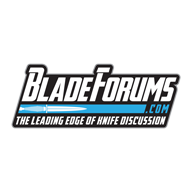- Joined
- Jan 11, 2019
- Messages
- 1,484
Your videos are on point and its really cool to see it work in tests, but why not share your protocol (EDIT) with everyone? It's not really rocket science. Also, feel free to become a bit more abusive with your test, i am always interested about what an edge can not do more then what it can do (that's how i test my blades).Even with top-notch ht: 15dps Edge whittles elk antler is quite a challenging test. It requires high strength and full elastic range in order to dig into the antler w/o deformation/failure. This is something easily test by anyone.
RA (fcc structure) isn't strong nor has full elasticity range. Grain growth is almost not a concern for high alloy steels because there are copious amount of grain pinning element/particle in solution (aust matrix).
Just to be clear - for this demo, I applied part of my R&D sequencing IP, hence won't disclose the 'how'. Although using simple tools (weed burner, toaster oven, freezer), complex technique were conducted. Perhaps point being, barrier to entry - equipment wise - is low. You've better setup, so now just matter of think & tinker.
Here is S30V 62.5rc with 13.5dps edge performs same tests - result: passed!
I am looking forward to the comments of the nay sayers
Last edited:

